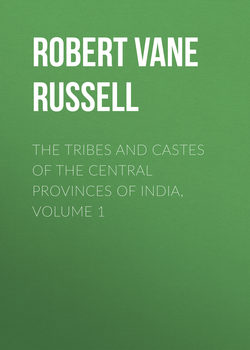Читать книгу The Tribes and Castes of the Central Provinces of India, Volume 1 - Robert Vane Russell - Страница 16
Part I.
Introductory Essay on Caste
Introductory Essay on Caste
13. The Vaishya
ОглавлениеIn the Vedas, moreover, M. Senart shows that the three higher castes are not definitely distinguished; but there are three classes—the priests, the chiefs and the people, among whom the Aryans were comprised. The people are spoken of in the plural as the clans who followed the chiefs to battle. The word used is Visha. One verse speaks of the Vishas (clans) bowing before the chief (Rājan), who was preceded by a priest (Brāhman). Another verse says: “Favour the prayer (Brahma), favour the service; kill the Rakshasas, drive away the evil; favour the power (khatra) and favour the manly strength; favour the cow (dherm, the representative of property) and favour the people (or house, visha).”30
Hindu sculptures
Similarly Wilson states that in the time of the Vedas, visha (related to vesha, a house or district) signified the people in general; and Vaishya, its adjective, was afterwards applied to a householder, or that appertaining to an individual of the common people. The Latin vicus and the Greek οἶκος are the correspondents of vesha.31 The conclusion to be drawn is that the Aryans in the Vedas, like other early communities, were divided by rank or occupation into three classes—priests, nobles and the body of the people. The Vishas or clans afterwards became the Vaishyas or third classical caste. Before they entered India the Aryans were a migratory pastoral people, their domestic animals being the horse, cow, and perhaps the sheep and goat. The horse and cow were especially venerated, and hence were probably their chief means of support. The Vaishyas must therefore have been herdsmen and shepherds, and when they entered India and took to agriculture, the Vaishyas must have become cultivators. The word Vaishya signifies a man who occupies the soil, an agriculturist, or merchant.32 The word Vasteriox used by the ancestors of the Pārsis, which appears to correspond to Vaishya, also signifies a husbandman, as already seen. Dr. Max Müller states: “The three occupations of the Aryas in India were fighting, cultivating the soil and worshipping the gods. Those who fought the battles of the people would naturally acquire influence and rank, and their leaders appear in the Veda as Rājas or kings. Those who did not share in the fighting would occupy a more humble position; they were called Vish, Vaishyas or householders, and would no doubt have to contribute towards the maintenance of the armies.33 According to Manu, God ordained the tending of cattle, giving alms, sacrifice, study, trade, usury, and also agriculture for a Vaishya.”34 The Sūtras state that agriculture, the keeping of cattle, and engaging in merchandise, as well as learning the Vedas, sacrificing for himself and giving alms, are the duties of a Vaishya.35 In the Mahābhārata it is laid down that the Vaishyas should devote themselves to agriculture, the keeping of cattle and liberality.36 In the same work the god Vayu says to Bhishma: “And it was Brahma’s ordinance that the Vaishya should sustain the three castes (Brāhman, Kshatriya and Vaishya) with money and corn; and that the Sūdra should serve them.”37
In a list of classes or occupations given in the White Yajur-Veda, and apparently referring to a comparatively advanced state of Hindu society, tillage is laid down as the calling of the Vaishya, and he is distinguished from the Vāni or merchant, whose occupation is trade or weighing.38 Manu states that a Brāhman should swear by truth; a Kshatriya by his steed and his weapons; a Vaishya by his cows, his seed and his gold; and a Sūdra by all wicked deeds.39 Yellow is the colour of the Vaishya, and it must apparently be taken from the yellow corn, and the yellow colour of ghī or butter, the principal product of the sacred cow; yellow is also the colour of the sacred metal gold, but there can scarcely have been sufficient gold in the hands of the body of the people in those early times to enable it to be especially associated with them. The Vaishyas were thus, as is shown by the above evidence, the main body of the people referred to in the Vedic hymns. When these settled down into villages the Vaishyas became the householders and cultivators, among whom the village lands were divided; the Sūdras or indigenous tribes, who also lived in the villages or in hamlets adjoining them, were labourers and given all the most disagreeable tasks in the village community, as is the case with the impure castes at present.
30
Rig-Veda, 6. 3. 16, quoted by Wilson, Indian Caste, p. 110.
31
Wilson, p. 109.
32
Monier-Williams, Sanskrit Dictionary, pointed out by Mr. Crooke.
33
Quoted by Wilson, p. 209. It would seem probable, however, that the Vaishyas must themselves have formed the rank and file of the fighting force, at least in the early period.
34
Manu, i. 90.
35
Wilson, Indian Caste, p. 193, quoting from Hiranyakeshi Sūtra.
36
Wilson, p. 260, quoting Mahābhārata, viii. 1367 et seq.
37
Mahābhārata, xii. 2749 et seq.
38
List of classes of Indian society given in the Purusha-Medha of the White Yajur-Veda, Wilson, pp. 126–135.
39
Manu, viii. 113.
